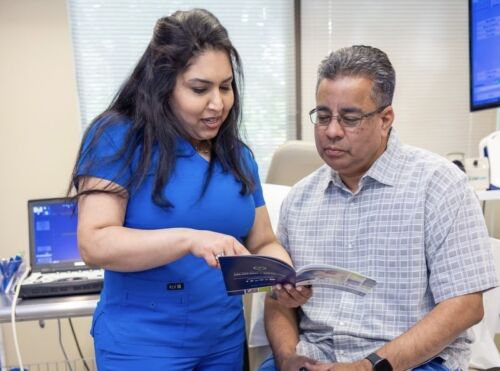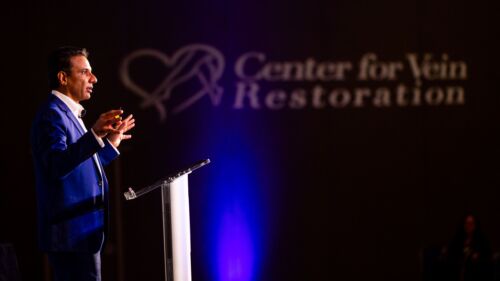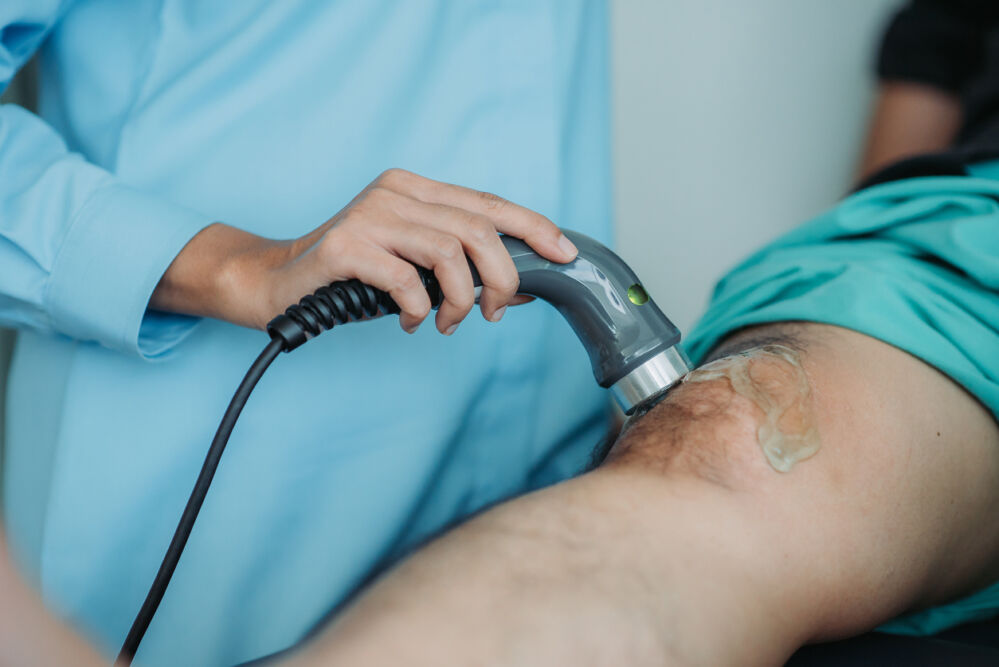In honor of National Men’s Health Month, we’re taking a look at the connection between weightlifting and varicose veins.
June is National Men’s Health Month. It’s the perfect time to focus on keeping the men in our lives fit and healthy, including checking in on their veins! A common health issue men mistakenly believe they don’t need to worry about is the development of varicose veins. Yet, according to the Mayo Clinic, 45 percent of men suffer from varicose veins.
That statistic shouldn’t be surprising, considering that many of the risk factors for varicose veins in men’s legs are the same for women. Heredity, obesity, age, and a sedentary lifestyle can lead to swollen, painful veins in both genders. One way to prevent varicose veins or reduce their symptoms is by exercising. However, not all exercises are safe for your veins. Weightlifting, a popular workout among men, could do more harm than good to your veins.
How weightlifting affects your veins
Weightlifting will not cause varicose veins. But if you are predisposed to varicose veins due to family history, weight, age, or a job where you sit or stand all day, you could raise your risk of varicose veins by weightlifting regularly.
When you lift weights, especially heavy ones, you strain the vena cava, a large vein in the abdomen that pumps blood back to the heart. The extra pressure restricts blood flow in your leg veins and wears down the valves in those veins responsible for pushing blood upward to the chest. Unable to contain the excess blood, the valves allow blood to leak backward in the vein, causing the vein to swell and pop outward as a visible varicose vein.
A strenuous weightlifting session can cause bulging veins to appear, which should not be confused with varicose veins. When you lift weights, a rush of blood to the muscles causes a temporary “plumping” of the veins. However, if those bulging veins don’t disappear after your workout or cause symptoms such as pain, cramping, and heaviness, you may have varicose veins. For the sake of your veins and overall health, get your varicose veins diagnosed and treated.
What men can do about varicose veins
Exercise is beneficial for your blood circulation, as it gets the blood pumping and moving through your veins and arteries. But you don’t necessarily have to give up your love of weightlifting! Instead, protect your veins from weightlifting harm with these tips:
Change Up Your Routine. Instead of lifting heavy weights, do more reps with lighter weights. Work with a trainer on proper lifting techniques.
Wear Compression Stockings. When you lift, wear a pair of compression stockings on your legs. These tight elastic garments gently squeeze the veins, so blood moves smoothly through the veins.
Mix in Low-Impact Exercises. Walking, pedaling an elliptical bike, and swimming are low-impact exercises that encourage blood flow in the legs while also being easier on the veins. Mix in these less stressful workouts with your reduced weightlifting sessions.
Raise Your Legs. Propping your feet on a pillow helps move your blood toward your chest. Make sure you raise your legs above your heart and keep the legs up for at least 15-minutes.
These tips will help reduce painful symptoms and may prevent new varicose veins from forming. To eliminate the signs of vein disease, you’ll need to undergo a minimally invasive procedure. These treatments successfully eliminate varicose veins within a brief office visit that takes only an hour or less. In honor of National Men’s Health Month, why not get your veins examined by a physician today?
Men: It’s time to take care of your veins!
Center for Vein Restoration (CVR) operates two vein care facilities serving the residents of Austin, Texas. Both offices are led by Aditya Gupta, MD, RPVI, DABVLM, an experienced vein physician who holds board certification in internal medicine and venous and lymphatic medicine. With his expertise, Dr. Gupta can diagnose your condition and offer customized treatment options.
To schedule a consultation with Dr. Gupta, visit www.centerforvein.com or call 240-965-3915.
11111 Research Boulevard
Suite 400
Austin, Texas 78759
7900 Farm to Market Road 1826
Building 1, Suite 170
Austin, TX 78737

 About Vein Disease
About Vein Disease
 Spider Veins
Spider Veins
 Varicose Veins
Varicose Veins
 Vein Disease Treatments
Vein Disease Treatments
 Treating Spider Veins
Treating Spider Veins
 Treating Varicose Veins
Treating Varicose Veins
 About Us
About Us
 Patient Resources
Patient Resources
 Physician Resources
Physician Resources

